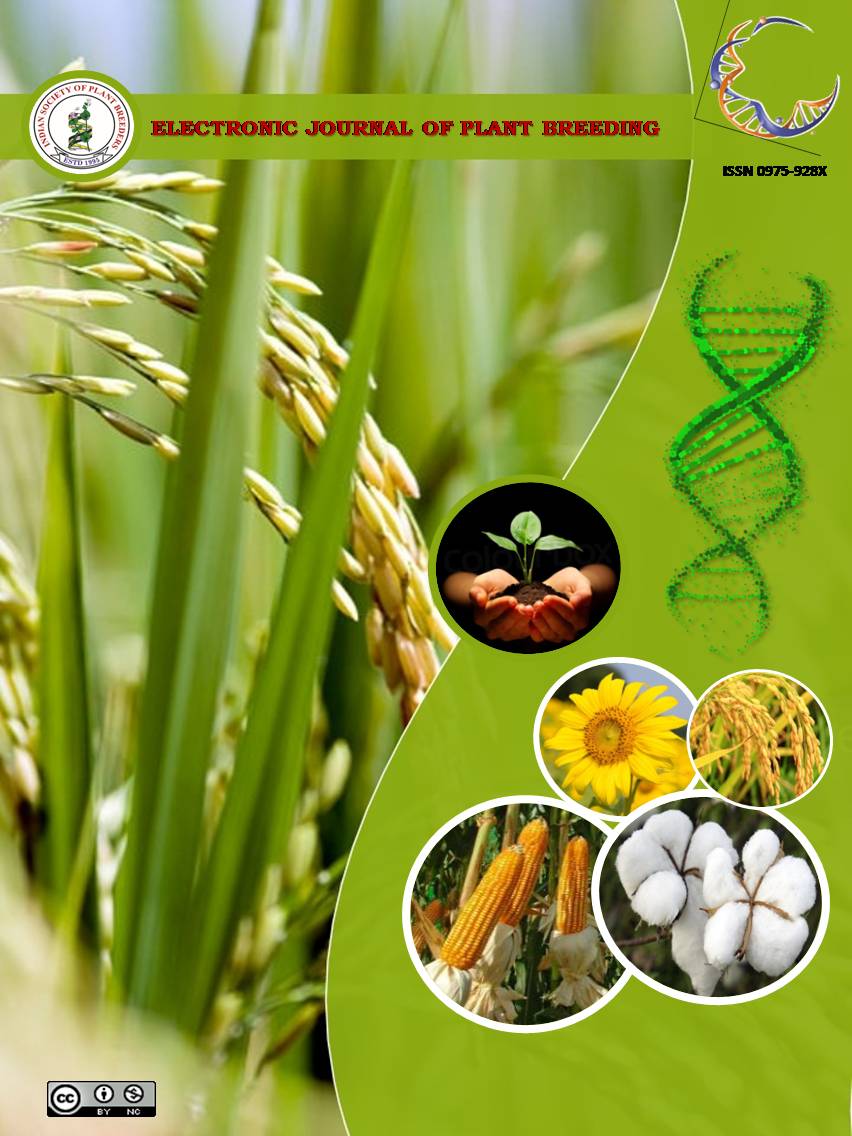Multi-environment trials of spring barley genotypes (Hordeum vulgare L.) in the final stage of breeding process
Abstract
Spring barley genotypes (cultivars and advanced breeding lines) have been tested in three environmental zones of Ukraine (Central Forest-Steppe, Northern Steppe and Polissia). The ANOVA has revealed reliable contributions from all three source of the variation: genotype, environment and genotype–environment interaction, but with their different ratio depending on the test conditions and studied genotypes. For spring barley cultivars the contribution of genotype–environment interaction was 22.55%, but for the advanced breeding lines it was only 10.56%. To establish patterns of genotype–environment interaction and genotypes ranking the GGE biplot model has been used. Both the change in the contribution of genotype to the total variation depending on environmental conditions and the dependence of characteristics of test environments on the genotypes studied have been revealed that in general, the combination of different ecological and year conditions of trial contributed to the identification of "the best of the best" genotypes in the final stage of breeding work. Spring barley cultivar MIP Bohun and breeding lines Deficiens 5005, Nutans 4855, and Nutans 4941 with optimal combination of yield performance and stability have been selected.

It is certified that:
- The corresponding author is fully responsible for any disputes arising due to the publication of his/her manuscript.
- The article has been seen by all the authors who are satisfied with its form and content.
- The sequence of names of authors in the by-line is as per their relative contribution to this experiment, giving due credit to all scientists who made notable contribution to it.
- All the authors fully understand that inclusion of any other co-authors or exclusion of any co-authors is not possible once the article has been submitted to the journal.
- The corresponding author takes full responsibility for this article.
- The address of the organization where the research was conducted is given.
- The article is exclusive for this journal, and the results reported here have not been sent (and will not be sent during its consideration by this journal) for publication in any other journal.
- Authors agree to abide by the objective comments of referees and do agree to modify the article into a short note as per the recommendation, for publication in the Electronic Journal of Plant Breeding.
- If published in Electronic Journal of Plant Breeding, the copyright of this article would vest with the Indian Society of Plant Breeders, who will have the right to enter into any agreement with any organization in India or abroad engaged in reprography, photocopying, storage and dissemination of information contained in it, and neither we nor our legal heirs will have any claims on royalty.


